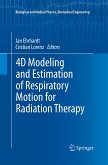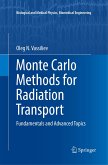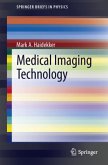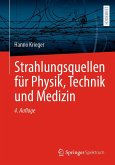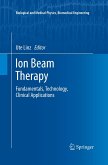Respiratory motion causes an important uncertainty in radiotherapy planning of the thorax and upper abdomen. The main objective of radiation therapy is to eradicate or shrink tumor cells without damaging the surrounding tissue by delivering a high radiation dose to the tumor region and a dose as low as possible to healthy organ tissues. Meeting this demand remains a challenge especially in case of lung tumors due to breathing-induced tumor and organ motion where motion amplitudes can measure up to several centimeters. Therefore, modeling of respiratory motion has become increasingly important in radiation therapy. With 4D imaging techniques spatiotemporal image sequences can be acquired to investigate dynamic processes in the patient's body. Furthermore, image registration enables the estimation of the breathing-induced motion and the description of the temporal change in position and shape of the structures of interest by establishing the correspondence between images acquired at different phases of the breathing cycle. In radiation therapy these motion estimations are used to define accurate treatment margins, e.g. to calculate dose distributions and to develop prediction models for gated or robotic radiotherapy. In this book, the increasing role of image registration and motion estimation algorithms for the interpretation of complex 4D medical image sequences is illustrated. Different 4D CT image acquisition techniques and conceptually different motion estimation algorithms are presented. The clinical relevance is demonstrated by means of example applications which are related to the radiation therapy of thoracic and abdominal tumors. The state of the art and perspectives are shown by an insight into the current field of research. The book is addressed to biomedical engineers, medical physicists, researchers and physicians working in the fields of medical image analysis, radiology and radiation therapy.
From the reviews:
"This book provides a very welcome one-stop reference on the subject. ... each chapter is painstakingly referenced and the end-of-chapter reference sections are extensive. ... The book seems predominantly aimed at engineers, physicists and researchers. ... The book is most useful as a reference for many different staff groups, and as such would be a valuable addition to any medical physics and engineering departmental bookshelf." (Mark Worrall, Scope, Vol. 23 (2), June, 2014)
"This is an in-depth review of advanced topics in 4D imaging and modeling of respiratory motion. ... The equation derivations are particularly helpful to researchers and students trying to understand the basic principles. ... The authors demonstrate a thorough knowledge of 4D imaging and modeling of respiratory motion. The chapters are well structured and contain a wealth of detailed and timely information." (Jing Cai, Doody's Book Reviews, March, 2014)
"This book provides a very welcome one-stop reference on the subject. ... each chapter is painstakingly referenced and the end-of-chapter reference sections are extensive. ... The book seems predominantly aimed at engineers, physicists and researchers. ... The book is most useful as a reference for many different staff groups, and as such would be a valuable addition to any medical physics and engineering departmental bookshelf." (Mark Worrall, Scope, Vol. 23 (2), June, 2014)
"This is an in-depth review of advanced topics in 4D imaging and modeling of respiratory motion. ... The equation derivations are particularly helpful to researchers and students trying to understand the basic principles. ... The authors demonstrate a thorough knowledge of 4D imaging and modeling of respiratory motion. The chapters are well structured and contain a wealth of detailed and timely information." (Jing Cai, Doody's Book Reviews, March, 2014)



